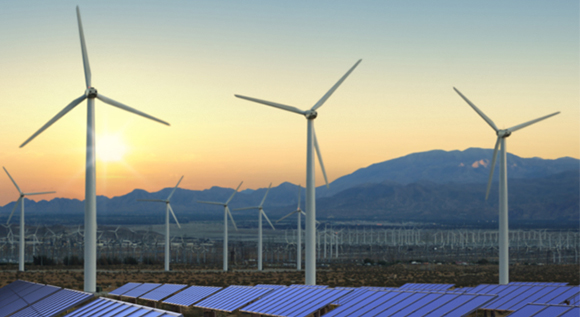Renewable energy on the rise around the world: a contribution to climate mitigation
Wind power and hydropower, photovoltaics and biomass – the whole world is investing in renewables right now. The latest figures confirm this trend. Global installed capacity of renewable electricity soared in 2014. However, great strides will still have to be made in the coming years to meet the international climate mitigation targets.
 © istockphoto.com/ jgroup
© istockphoto.com/ jgroup
Renewables are key for getting global CO2 emissions under control. Germany’s energy supply is becoming "greener" every year. Not only in Germany, but all over the world, countries are starting to realise that a zero carbon future is possible thanks to the massive expansion of renewable energy. After all, climate protection is not a national problem, but a global one.
Global Status Report: Renewables are picking up speed
Almost 28 per cent of the global installed power generation capacity comes from renewable sources. This covers almost one quarter (22.8 per cent) of the global electricity demand. These figures are from the tenth edition of the Global Status Report which was recently presented by the "Renewable Energy Policy Network for the 21st Century" (REN21) at the Vienna Energy Forum. The report is published annually and presents the global state of installed renewables-based capacity, focusing on national expansion targets, actual expansion per year and annual investments in renewable energy.
The most important findings: the world’s installed renewables-based capacity grew by around 8.5 per cent to 1,712 gigawatts (GW) last year. This means that in 2014 almost 60 per cent of global net installed power capacity additions were based on renewable sources. Wind power saw the largest absolute increase in the electricity sector, growing by a record-breaking 51 GW to a total of 370 GW (see "direkt answers"), followed by hydropower and photovoltaics increasing by 45 GW to 1,055 GW and 39 GW to 177 GW respectively.
Investment in renewable energy was up in 2014 from the previous year and was higher than net investment in fossil fuel plants (e.g. coal- or gas-fired plants) for the fifth year in a row. Last year, investment amounted to around 270 billion US dollars. When including the investment in large hydropower stations, with a total capacity exceeding 50 megawatts, this increases to 301 billion US dollars! It is impressive that developing countries invested 131.3 billion US dollars in renewable energy projects for power and fuel generation, which is almost as much as the 138.9 billion US dollars invested by the industrialised countries. This is a result of rapidly falling costs for renewables technology which have helped to increase market shares in the developing countries.
More than 164 states have set expansion targets for renewable energy and 145 states have launched funding programmes to boost renewables.
According to REN21, the global trend to expand renewable energy in conjunction with renewed efforts for energy efficiency have helped decouple economic growth from the increase in CO2 emissions for the first time in 4 decades. In 2014, the global economy grew by around 3 per cent and global energy consumption increased by 1.5 per cent, but global CO2 emissions stayed flat.
Special Report "Energy and Climate Change": further action is necessary
Experts who joined together for the presentation of the IEA’s special report "Energy and Climate Change" at the Federal Ministry for Economic Affairs and Energy on 19 June also stressed that the decoupling of economic growth and emissions was an encouraging sign. Six months before the critical climate talks in Paris, the report takes stock of the national pledges submitted so far. It also proposes a package of additional measures for the global energy sector to ensure that the two-degrees target – the internationally agreed goal of keeping global warming below two degrees relative to pre-industrial levels – will remain attainable.
The IEA’s chief economist, Dr. Fatih Birol, pointed out that the Paris summit has to raise the climate ambition because the pledges adopted by the member states so far are insufficient to put the world on track to reach the two-degrees target. The analyses carried out by Fatih Birol and his team show that even if the pledges were to be implemented in full, global warming could only be limited to 3.5 degrees in the long term.
The report does not conclude, however, that the two-degrees target is unrealistic or impossible. On the contrary: the report proposes some concrete steps to put the international community back on track for meeting the two-degrees target – without impacting the prospects for economic growth or development of the individual countries.
Mr. Birol described five key measures that could deliver a peak in CO2 emissions by 2020:
- Increasing energy efficiency in the industry, buildings and transport sectors.
- Increasing global investment in renewable energies from 270 billion dollars in 2014 to 400 billion dollars in 2030.
- Reducing the use of the least-efficient coal-fired power plants and banning their construction.
- Gradually phasing out fossil-fuel subsidies by 2030.
- Reducing methane emissions in oil and gas production.
One thing is clear: to tackle the climate change challenges and account for the special role of the energy sector, a joint vision for long-term decarbonisation of the global energy system is needed. This vision is not only pursued by Germany, the country of the "Energiewende", but also at the highest international level as was shown by the G7 leaders at the Elmau summit a few days ago.

